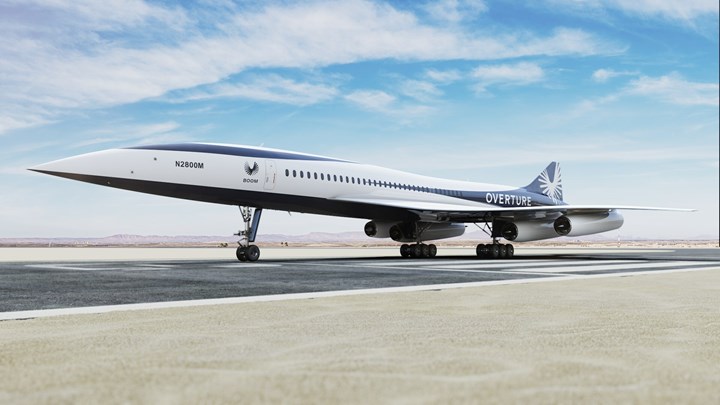Boom Supersonic announces aircraft, engine and investment milestones
New strategic investment from NEOM comes as XB-1, Symphony and Overture achieve important program turning points.
Boom Supersonic (Denver, Colo., U.S.) has announced multiple new milestones across the Overture airliner, Symphony engine and XB-1 supersonic demonstrator programs. The company has also confirmed closing of an investment round, including a strategic investment from the NEOM Investment Fund (NIF).
“Our goal is to bring the world closer together through faster flights,” Blake Scholl, founder and CEO of Boom Supersonic, says. “We’re excited to collaborate with partners and investors around the globe as we work to realize our shared vision.”
Announced in October 2023, the NEOM Investment Fund is the strategic investment arm of NEOM, the sustainable regional development in northwest Saudi Arabia. As part of the agreement, Boom and NIF will collaborate on opportunities to make the Gulf region more accessible through the power of supersonic flight. The NIF investment now takes Boom’s total funding from investment and other capital sources to more than $700 million.
Boom has also achieved key milestones toward XB-1’s historic first flight, which remains on track for later this year at the Mojave Air & Space Port. After the receipt of its airworthiness certificate from the Federal Aviation Administration (FAA), XB-1 has recently completed successfully a number of integrated tests, including ground vibration mode testing, fuel system integrated testing, engine operability testing and medium-speed taxi testing up to 90 knots. Following its Flight Readiness Review (FRR) at the beginning of November, XB-1 will conduct high-speed taxi testing in final preparation for its first flight.
Boom also announced that Symphony, the Boom-developed propulsion system purpose-built for sustainable and economical supersonic flight, has successfully conducted its key 2023 engineering milestone, known as the conceptual design review (CoDR). This important achievement paves the way toward Symphony’s first hardware rig tests planned for 2024.
In late September, Boom commemorated the “topping out” of the Overture Superfactory at the Piedmont Triad Airport in Greensboro, North Carolina, signifying the completion of the building’s frame. Over the past 6 weeks, the company has finished the decking on the top of the structure, poured the concrete flooring and installed the metal side wall panels. The work to complete the Overture Superfactory is now ahead of its original schedule with completion anticipated in the second quarter of 2024.
Learn more about Overture program advances. For updates on the XB-1, read “Boom Supersonic advances flight preparations for composite XB-1 demonstrator.”
Related Content
-
Industrializing additive manufacturing in the defense/aerospace sector
GA-ASI demonstrates a path forward for the use of additive technologies for composite tooling, flight-qualified parts.
-
Combining multifunctional thermoplastic composites, additive manufacturing for next-gen airframe structures
The DOMMINIO project combines AFP with 3D printed gyroid cores, embedded SHM sensors and smart materials for induction-driven disassembly of parts at end of life.
-
Plant tour: Aernnova Composites, Toledo and Illescas, Spain
RTM and ATL/AFP high-rate production sites feature this composites and engineering leader’s continued push for excellence and innovation for future airframes.

















